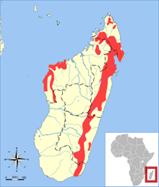


Using PowerPoint
PowerPoint presentations include
pictures, graphs, charts, and key
words to help the audience more
easily understand what is being
said by the presenter. It is not a
script. The presenter doesnít
look at it during the presentation.
If there is a video in the PPT, it
must be short (about 10-30
seconds), and the presenter
MUST NOT make it a movie for
students to watch. Rather, the
video is silent and simply visual
while the presenter is speaking.
Bring your PowerPoint
presentation at least a day early
to make sure that itís working
properly on the classroom
computer. Itís not possible to fix
the problems on the day of the
presentation, and that can really
cause serious problems for the
presentation.
World's Strangest Animal
Copyright © 2012 by Albert • All Rights reserved • E-Mail: theNOVAlbert@gmail.com • Designed by AlbertEnglish.com with the exception of some banners and buttons

Presentation Paper
The presentation paper is
something that you give to the
class and the teacher. It must be
brief, and it should have the
important main points that all in
the class should remember. It
must not have all of the
information that will be spoken
during the presentation because
it is not a script. However, it
should contain a website where
students can learn more.




My reasons for calling it the World's Strangest Animal are due to these factors:
1.Appearance: the Aye-aye's startlingly strange facial features including its large ears; its long, thin middle finger.
2.Foraging method: the Aye-aye's way of finding grubs within trees by tapping on a tree while listening for hollow areas within; its way of opening up a hole in the tree with its teeth; its way of seizing the grub, scraping it out with its eerie middle finger.
Video: http://www.youtube.com/watch?v=kpkXHX_7ju0
1.Appearance: the Aye-aye's startlingly strange facial features including its large ears; its long, thin middle finger.
2.Foraging method: the Aye-aye's way of finding grubs within trees by tapping on a tree while listening for hollow areas within; its way of opening up a hole in the tree with its teeth; its way of seizing the grub, scraping it out with its eerie middle finger.
Video: http://www.youtube.com/watch?v=kpkXHX_7ju0
General Information about the Aye-Aye
The Aye-aye (Daubentonia madagascariensis) is a lemur, a strepsirrhine primate native to Madagascar that combines rodent-like teeth and a special thin middle finger to fill the same ecological niche as a woodpecker. It is the world's largest nocturnal primate, and is characterized by its unusual method of finding food; it taps on trees to find grubs, then gnaws holes in the wood and inserts its narrow middle finger to pull the grubs out. The only other animal species known to find food in this way is the Striped Possum.[4] From an ecological point of view the Aye-aye fills the niche of a woodpecker as it is capable of penetrating wood to extract the invertebrates within.[5][6] The Aye-aye is the only extant member of the genus Daubentonia and family Daubentoniidae (although it is currently classified as Near Threatened by the IUCN); a second species, Daubentonia robusta, appears to have become extinct at some point within the last 1000 years.[7]
Habitat
The Aye-aye lives primarily on the east coast of Madagascar. Its natural habitat is rainforest or deciduous forest, but many live in cultivated areas due to deforesting. Rainforest Aye-ayes, the most common, dwell in canopy areas, and are usually sighted upwards of 700 meters altitude. The Aye-aye sleeps during the day in nests built in the forks of trees.[citation needed]
Diet
The Aye-aye commonly eats nuts, grubs, fruits, nectar, seeds, and fungi, classifying it as an omnivore. It often picks fruit off trees as it moves through the canopy, often barely stopping to do so. An Aye-aye not lucky enough to live in its natural habitat will often steal coconuts, mangoes, sugar cane, lychees and eggs from villages and plantations. Aye-ayes tap on the trunks and branches of the trees they visit up to 8 times per second and listen to the echo produced to find hollow chambers inside. Once a chamber is found they chew a hole into the wood and get grubs out of that hole with their narrow and bony middle fingers.[citation needed]
Note: The information to the left (←) and above (↑) was 100% copied from Wikipedia, and it can be found in full at the following website.
http://en.wikipedia.org/wiki/Aye-aye
The Aye-aye (Daubentonia madagascariensis) is a lemur, a strepsirrhine primate native to Madagascar that combines rodent-like teeth and a special thin middle finger to fill the same ecological niche as a woodpecker. It is the world's largest nocturnal primate, and is characterized by its unusual method of finding food; it taps on trees to find grubs, then gnaws holes in the wood and inserts its narrow middle finger to pull the grubs out. The only other animal species known to find food in this way is the Striped Possum.[4] From an ecological point of view the Aye-aye fills the niche of a woodpecker as it is capable of penetrating wood to extract the invertebrates within.[5][6] The Aye-aye is the only extant member of the genus Daubentonia and family Daubentoniidae (although it is currently classified as Near Threatened by the IUCN); a second species, Daubentonia robusta, appears to have become extinct at some point within the last 1000 years.[7]
Habitat
The Aye-aye lives primarily on the east coast of Madagascar. Its natural habitat is rainforest or deciduous forest, but many live in cultivated areas due to deforesting. Rainforest Aye-ayes, the most common, dwell in canopy areas, and are usually sighted upwards of 700 meters altitude. The Aye-aye sleeps during the day in nests built in the forks of trees.[citation needed]
Diet
The Aye-aye commonly eats nuts, grubs, fruits, nectar, seeds, and fungi, classifying it as an omnivore. It often picks fruit off trees as it moves through the canopy, often barely stopping to do so. An Aye-aye not lucky enough to live in its natural habitat will often steal coconuts, mangoes, sugar cane, lychees and eggs from villages and plantations. Aye-ayes tap on the trunks and branches of the trees they visit up to 8 times per second and listen to the echo produced to find hollow chambers inside. Once a chamber is found they chew a hole into the wood and get grubs out of that hole with their narrow and bony middle fingers.[citation needed]
Note: The information to the left (←) and above (↑) was 100% copied from Wikipedia, and it can be found in full at the following website.
http://en.wikipedia.org/wiki/Aye-aye
The World's Strangest Animal
The Aye-Aye of Madagascar
The Aye-Aye of Madagascar
An Aye-aye foraging, c.1863, Joseph Wolf. Held at the Natural History Museum, London
Aye-aye range
Scientific Classification
Kingdom: Animalia
Phylum: Chordata
Class: Mammalia
Order: Primates
Family: Daubentoniidae
Genus: Daubentonia
Binomial name
Daubentonia madagascariensis
(Gmelin, 1788)
Kingdom: Animalia
Phylum: Chordata
Class: Mammalia
Order: Primates
Family: Daubentoniidae
Genus: Daubentonia
Binomial name
Daubentonia madagascariensis
(Gmelin, 1788)
Near Threatened (IUCN 3.1)[3]
An Aye-aye eating banana flowers.
Aye-aye[1][2]
Conservation status
Presentation Papers
Presentation Papers
World's Strangest Animal


















